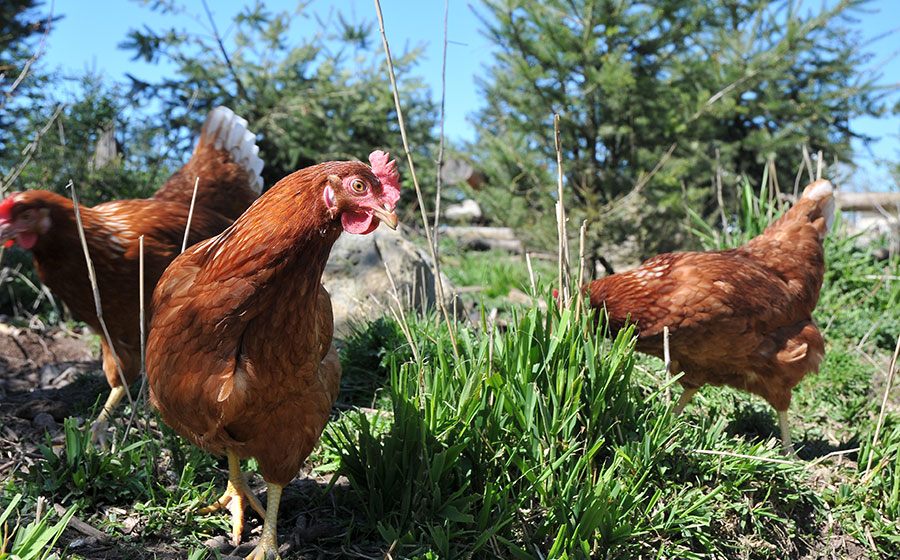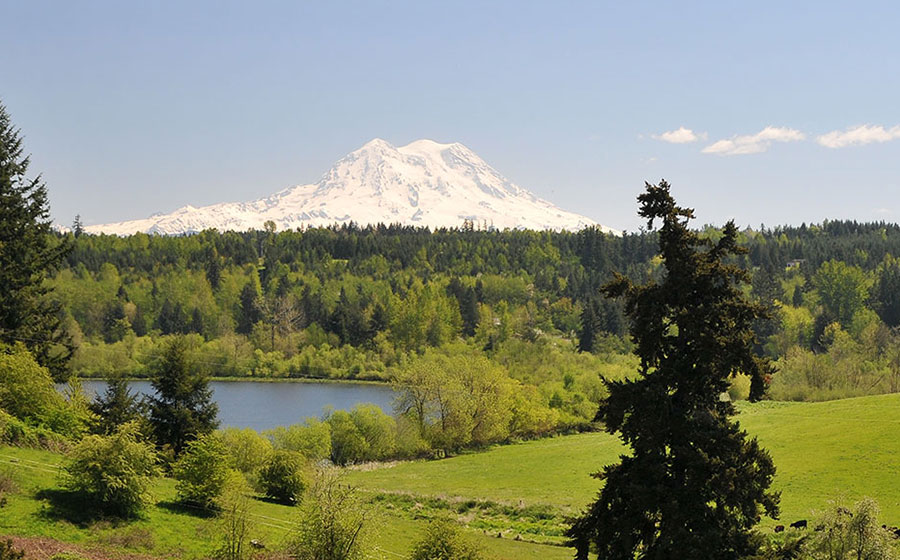Our Standards
We’re committed to taking care of our land because we want it to be around for the next 100 years. We follow the Certified Humane standards. To learn more, please visit www.certifiedhumane.org
Free Range
All doors are open for more than half of daylight hours on a daily basis. Free range birds have outside space anywhere between 2 to 30 square feet per bird depending on the outdoor conditions.
- First Week in Lay House (17 weeks old)
- Birds will not have access to winter garden or outside areas to allow them to get familiar with new water and feed systems.
- Second Week in Lay House to 20 Weeks
- Birds will have access to Winter Garden from 1pm to end of day to allow them to get familiar with nest space during peak laying time in the mornings.
- Week 20 to Week 25
- Birds will have complete outside areas access in addition to winter gardens from 1pm to end of day.
- Week 25 to remaining life of flock
- Birds will have full access to winter garden and outside access areas from morning to end of day.
Exceptions – Times we will keep our birds in for their protection
- If temperatures are not projected to rise above 40° F for the day, birds will still have access to Winter Garden but not outside area access.
- Over a quarter inch of rain
- Winds over 20 MPH
- If birds are suspected of having symptoms of illness, or disease they will remain inside as not to pose a threat of contagion to other flocks. Until an Avian veterinarian determines that the situation is not contagious.
- If government agencies have sent out a report of a local avian disease threat. All birds in the reported area will be kept inside until an avian veterinarian determines the threat is not imminent.
Organic
All doors are open for more than half of daylight hours on a daily basis. Free range birds have outside space anywhere between 2 to 30 square feet per bird depending on the outdoor conditions.
- First Week in Lay House (17 weeks old)
- Birds will not have access to winter garden or outside areas to allow them to get familiar with new water and feed systems.
- Second Week in Lay House to 20 Weeks
- Birds will have access to Winter Garden from 1pm to end of day to allow them to get familiar with nest space during peak laying time in the mornings.
- Week 20 to Week 25
- Birds will have complete outside areas access in addition to winter gardens from 1pm to end of day.
- Week 25 to remaining life of flock
- Birds will have full access to winter garden and outside access areas from morning to end of day.
Exceptions – Times we will keep our birds in for their protection
- If temperatures are not projected to rise above 40° F for the day, birds will still have access to Winter Garden but not outside area access.
- Over a quarter inch of rain
- Winds over 20 MPH
- If birds are suspected of having symptoms of illness, or disease they will remain inside as not to pose a threat of contagion to other flocks. Until an Avian veterinarian determines that the situation is not contagious.
- If government agencies have sent out a report of a local avian disease threat. All birds in the reported area will be kept inside until an avian veterinarian determines the threat is not imminent.
Pasture Raised
Birds at 22 weeks of age live in permanent housing and have access to grassland throughout the day. Cover and shade must be available, be visible from the house, and distributed throughout the pasture to encourage birds to use the entire outdoor area. Birds have access to the outdoors from within three hours of sunrise until one hour before sunset. If weather conditions pose a risk to the birds’ welfare, they can be withheld from pasture. Pasture Raised birds have outside space 108 square feet per bird depending on the outdoor conditions.
Mobile Pasture
Birds live outdoors on grassland during daylight hours for their entire production cycle with mobile housing available for laying eggs and secure roosting at night. all birds have continuous daily access to grassland from one hour after sunrise until one hour before sunset. Mobile housing is moved weekly and birds have continuous access to outdoors. Shade and cover must accommodate all birds in the flock. Only if extreme weather conditions pose a risk to the birds’ welfare, they can be withheld from pasture.
Salmon Safe Certified
The Nisqually River runs along 1,500 acres of Wilcox Family Farms. Each year salmon travel up the Nisqually River to spawn, and they need a consistent salmon-safe environment to thrive.
Our salmon-safe practices keep the Nisqually River and salmon environmentally safe at all times. We follow strict water reclamation and conservation guidelines. We’re also a proud participant in Stewardship Partners, helping to protect important river, forest and other nearby habitats. Additionally, we’ve maintained a close working bond with the Nisqually Tribe for the past 50 years to maintain a naturally clean salmon habitat.
As a result, each year salmon enjoy a natural and beautiful spawning habitat. The Salmon-Safe certification is our continued commitment to keeping salmon, consumers and the environment safe and healthy.

